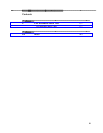
About This Guide
How to Use This Guide
This guide contains a complete description of the FAX Attendant system.
During initial implementation, the System Manager should become familiar with
the FAX Attendant System by reading all of this guide and the
AT&T AUDIX
Voice Power
TM
/FAX Attendant System
TM
Planning and Implementation
document.
For day-to-day operations, the System Manager and the Service Administrators
should read those portions of this guide and of the
AT&T AUDIX Voice
Power
TM
/FAX Attendant System
TM
Planning and Implementation
document that
are related to their job responsibilities.
Conventions Used in this Guide
The following conventions are used in this guide:
Commands and text you should type appear
in this style of type
.
Values, instructions, and prompts that appear on the screen are in this
style of type.
Key names that are always located on the keyboard in the same place
appear in smooth-cornered boxes, as in
Enter
.
Touch-tone keys on the telephone set keypad are enclosed in squares,
such as
3 and
# .
Functions keys (keys that start with an F, followed by a number), appear
in boxes with the current meaning following in parentheses such as
F3
(SAVE).
The current meanings of the function keys are shown by labels at the
bottom of the screen. On the screen diagrams in this manual, each label
box may contain two labels (top and bottom). On the actual screen, either
the top set of labels or the bottom set of labels will show, not both.
On the screen diagrams, the top label is the meaning of the function key
when the screen first appears. These meanings have been selected to be
the most useful for that screen. The bottom label is the meaning of the
function key after the
F8 (CHG-KEYS) key has been pressed. (Pressing
F8 (CHG-KEYS) again restores the top labels.) A typical set of key labels
on a screen diagram might be:
xi


















